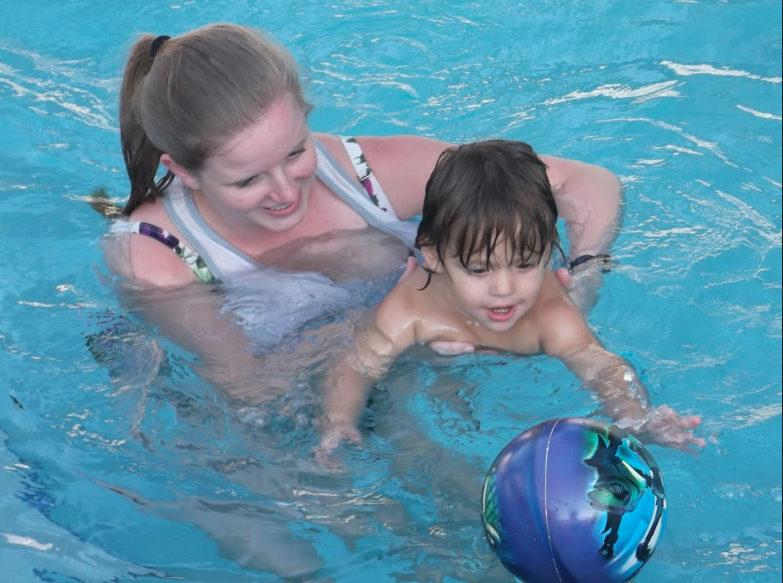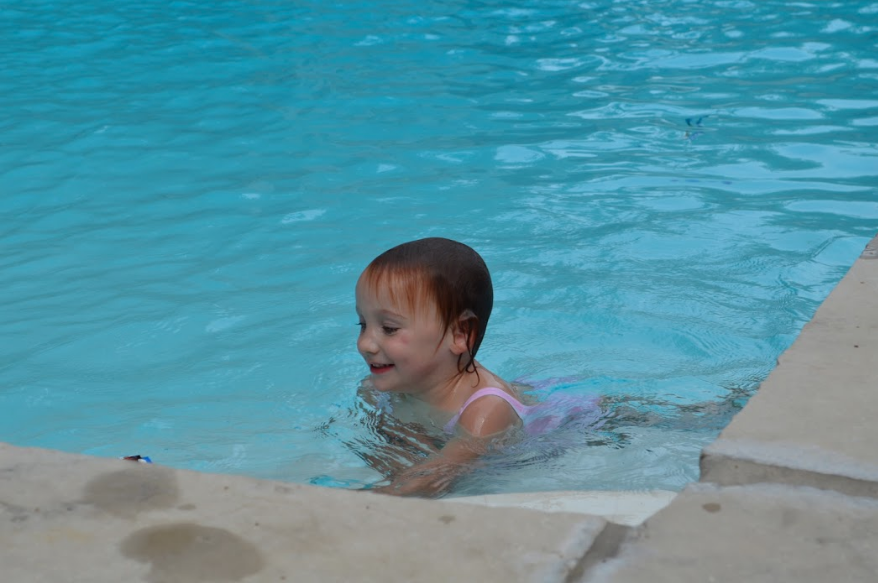
Swimming lessons can be very beneficial for children with autism. Children with Autism Spectrum Disorder (ASD) are 160 times more likely to drown than their neurotypical peers. Not only is swimming a form of therapy and drowning prevention but it is also great for socialization. This is a life skill that everyone should learn – not excluding autistic individuals. Before getting into what a swimming lesson might look like for an autistic child, let’s look at the considerations to take before planning swimming lessons and the ways you could support your child’s learning.
Water safety awareness
Water safety training for people with autism is essential to prevent accidents. Since autistic people are drawn to water their chances of drowning are increased as they may wander away. The best way to prevent drowning from occurring is to make sure that you provide your child with swimming lessons. Know how to talk water safety with your autistic child by preparing yourself and taking the necessary measures to ensure your child’s safety. Safety measures are not exclusive to swimming lessons. When teaching a child with autism about water safety, you should use techniques that will help ensure they’ll able to take in the information. For example, give water safety lessons in a place with few distractions and make sure to repeat lessons and concepts.
The final swimming lesson should be with clothes on. Remember: teaching your child how to swim does not mean your child is safe in water. If you own a pool, fence it and if neighbors have pools, let them know of these safety precautions and your child’s tendency to wander. Remove all toys or items of interest from the pool when not in use.
The following are some safety considerations and things you can do to increase water safety and awareness:
Start with sensory integration
One problem you may run into as you start your child in swim lessons are sensory issues related to water. If your child has a sensory processing disorder, it is best to find a swim lesson program designed to address the disorder.
Ease children into a swim program
Before your child’s first swim lesson, take them for a tour of the pool where they’ll be taking lessons (ideal if it is a home pool). This will give them a chance to get used to the sights, smells, and sounds they’ll find there. We also recommend having an instructor blow their whistle prior to the first lesson so that your child can begin to get used to how loud it is and learn why the whistle is necessary.
Take steps to prevent wandering
Many children with autism have a tendency to wander. Naturally, if a child wanders to a body of water, they could find themselves in great danger. May Institute provides tips on how to prevent wandering. For example, you should place alarms or chimes on doors, always be sure to lock access points around pools, and place “Stop” signs on doors.
Stay near your child when around water
An accident can happen in a split second. Be in arms reach of your child when you are near any kind of water, whether it’s a swimming pool or a bath tub.
Teach them about other dangers associated with water
Children with autism may not always recognize dangers that are obvious to others. When you’re teaching your child about water safety be sure to also go over related threats, such as “water depth, water temperature, current, and slippery surfaces.”
Take advantage of the Big Red Safety Toolkit
The toolkit, produced by the National Autism Association, is a comprehensive, excellent safety guide for parents of children with autism. It includes resources that can be a great help in keeping a child with autism safe around water.

One on one lessons are best
Group lessons can be stressful for children with autism, not only that, but group lessons don’t provide the attentiveness of the instructor the same way one-on-one lessons do, which is extremely important when it comes to gauging your child’s abilities, interests and comfort level. It is crucial to focus on their abilities, not their disabilities! The instructor should teach your child to their abilities. The biggest mistake to make is to underestimate them. Underestimation is not only dangerous for your child’s confidence, but it becomes a limiting factor in the lessons. Avoid this at all costs. Let them show you their abilities, they might exceed your expectations!
Build trust, break down fear; share vulnerabilities
Another reason why one-on-one lessons are best; they let trust be built between the child and the instructor as well as you and your child. It’s important that your child trusts the instructor as much as they trust you, the parent. Whether or not you’re neurotypical, trust is a huge component of learning how to swim. Especially important is the ability to share vulnerabilities. For example, if your child is scared of submerging their face under water – even for a few seconds – share that vulnerability. Also ensure the instructor is co-operating in the same way. If your child witnesses you or the instructor submerging they will feel more comfortable following suite. When they’re ready, do it again with them. It doesn’t matter what the step is; whether it’s getting into the pool, splashing, holding their breath, you name it – be a role model for your child.
Too many instructors will force a kid under but will not go under with them. We share this experience with them and celebrate every small win. Say, ‘Let’s do it together!’ Vulnerability is a powerful tool when used properly.
Cater to the needs of your autistic child
Sensorial needs vary from child to child. You know your child best, to make them comfortable during the swimming lessons, ensure all their needs are met.
Some children with autism are non-verbal. While this raises the need for specialized swim lessons, it certainly doesn’t mean the child won’t be able to swim.
As the instructor teaches various strokes and swimming techniques to the class, there may be some things that your child has difficulty with specifically because of his or her sensory issues. If an autistic child is struggling to learn a particular technique, despite the fact that they are doing fine with other aspects of swimming, it may be that they are trying to avoid sensory overload or discomfort. For example, many autistic children have a difficult time putting their head under the water. In this case, the instructor should work with the child specifically on the parts of swimming that he or she finds difficult. Finding new ways to break the skill down into steps, encouraging the child to proceed.
In this example, if the child has difficulty putting their head under the water, you might start with just putting the chin under water, then just the mouth, then the mouth and nose, then just the face, until finally the child is willing to submerge their entire head.
Provide consistency and routine
Think about the routine before and after the lesson. Children with autism need consistency as it’s a form of structure that creates stability and order. Routines play an important role in the lives of people with autism. The everyday hustle and bustle that most people view as normal can be an overwhelming combination of frightening crowds, intimidating sounds and overbearing lights for people with autism. One particular method is for the child to take a particular object or photo to swimming lessons that symbolizes the swimming class. Use the same or similar equipment each lesson, and lastly, implement a lesson routine which follows a strict structure each lesson.
Each lesson should include a warmup and cool-down routine. These should be the same routines for every lesson and can be as simple as splashing water, or blowing bubbles. Routine will help calm your child’s nerves and increase confidence in completing tasks.
Celebrate all triumphs!
Big or small, celebrate your child’s progress. This is as essential for your autistic child as it would be for a neurotypical child. It may be as simple as touching the tip of their nose to the water, or it could be swimming the full length of the pool with a new stroke. Show them their accomplishment is big. Autistic children need to be told when they’ve met expectations and done something correctly. Even the smallest progress should be rewarded so that they’re encouraged to continue.
Allow for free time
Children learn through play an exploration. Give them a chance to practice their newly learned skills at their own pace! Give the students time to explore the water. This may include freedom from their wheelchair, being held but allowed free movements, or spending “quiet time” underwater. Always strongly supervise this time for safety but allow them the freedom. Many students attend multiple therapy sessions and doctors’ appointments and are working hard on new skills, so this can be a refreshing time for the students to just be free. It can also help the instructor get to know them on a new level.

Swimming lesson for an autistic child:
The above aforementioned are pre-emptive steps for you, they are also steps that should be applied to your child’s swimming lessons. Prepare for your first lesson! Here’s how a swimming lesson with your autistic child will likely go. You will want to have task variation that should use this structure or something similar. Decide how long you want the lessons to be and commit to those times. Will a lesson be 30 minutes, 1 hour or 2? This might be dependant on factors such as;
Before entering the water
1) Use pictures to augment your social story and continue the process of getting your child used to the idea of swimming lessons. Photos and videos can be particularly beneficial to children who are nonverbal or who are visual thinkers generally.
2) Many autistic children do better in a new environment if they’re given the opportunity to become familiar with the place without any expectations. Introducing your child to the location where swim lessons will take place can help them become more comfortable.
3) An autistic child will benefit from having the opportunity to watch a swimming class in progress before they participate in one themselves. Let the pool or swimming club know that you plan to take your child to observe lessons. In addition, you can have your child meet the instructor and learn more about what will happen. Point out activities the children in the class are doing, and when the teacher is giving instructions. You also can use this opportunity to point out proper behavior around the pool, including how to walk around the pool deck and how to enter and exit the water.
4) Autistic people are often very passionate about a particular object or topic of interest. Using a child’s interests may be the most important technique the instructor can use to capture and hold their attention during lessons. Let the instructor know your child’s point of interest.
5) Eliminate unnecessary noises. Many swimming instructors use whistles and communicate with students in loud voices, which can be intimidating or even physically painful for the autistic child. If your child has significant aural sensitivity, make sure you let the swim instructors know well in advance of the swimming lessons so they can accommodate.
Entering the water
Autistic children often spin in place, flap their hands, or make other repetitive movements (called “stimming”) to cope with sensory overload, or to calm themselves when they are feeling anxious. Particularly in the swimming environment, the instructor should take care not to discourage an autistic child from stimming. If your child has particular fidgets or other items that they use, get permission for them to take one or more of those items to the pool with them (provided they’re waterproof). These items can serve as a comfort to your child. Observe the classes while your child is participating. If your child’s behavior gets disruptive, encourage them to leave the pool until they can calm down. In some situations, you may want to to be in the pool with your child, particularly if your child is nonverbal or prone to violent outbursts.
Here’s what a structured lesson might entail (adjust activity times and activities based on your child’s needs or preferences but ensure it’s a routine):
Have introductory songs and games for warm up – 5 to 10 minutes
Individual instruction (just instructor and student with parent(s) nearby encouraging!) – 20 minutes
Free time! – 10 minutes
Goodbye songs and warm down – 5 minutes
Visual aids and physical prompts
Generally, you’ll want to have the instructor keep instructions short and sweet. Autistic children may struggle to process auditory input, so visuals help them catch all the useful information. Many autistic children are visual learners who will benefit by seeing rules, techniques, and expectations in picture format. An action figure with movable arms and legs can be a good visual aid, because the figure can help demonstrate the stroke. Your child can move the action figure to replicate the stroke, giving them a strong, three-dimensional visual image of what they should do. Allowing them to manipulate the action figure also engages their sense of touch, making it easier for them to understand what they’re expected to do.
There are tonnes of fun sensory pool toys your autistic child will love that can aid them visually. Look into how you can make the swimming experience more enjoyable for them!

FAQ
What can parents do to make swim lessons go as smoothly as possible?
First, find a way to introduce the child to the water before lessons begin. This will be dependent upon the child’s specific needs. However, a few examples are as follows: watching videos of children taking swimming lessons, taking a tour of the facility once or twice before starting any lessons, introduce water play with specific toys during bath time to use as transitional objects when introducing the pool. If you are unable to take a tour, you can do a virtual tour with video or pictures of the facility. The same/similar methods can be used to introduce the child to the swimming instructor.
What should parents do if their autistic child absolutely hates being in the water?
Panic is always a concern. Hence, parents desire to teach their child safety skills to use in case of emergency such as falling into a pool. The child may need an extended period of time to be desensitized to the experience. Utilizing occupational therapy and sensory-based techniques can assist in this process. In the meantime, the parent should take other precautions. For example, identify a swim vest, or suit, that the child tolerates. Ensuring the child has on a flotation device whenever around water. Be sure that personal pools, including those in the neighborhood, are secured with fences or alarms. This may be helpful during the warm weather months. Yet, any device should not replace human attentiveness, including educating neighbors and family members.
What are tips for making sure the child understands and is absorbing what they’re being taught (especially for non-verbal children)?
Even if the child is nonverbal, they can be demonstrate what they have learned. Social stories can be used with pictures to allow them to answer questions related to water scenarios. Children typically respond to rules and routines. Therefore, ensure that they are clearly explained in a procedural method (I.e. Step-by-step rules, or mnemonics).


